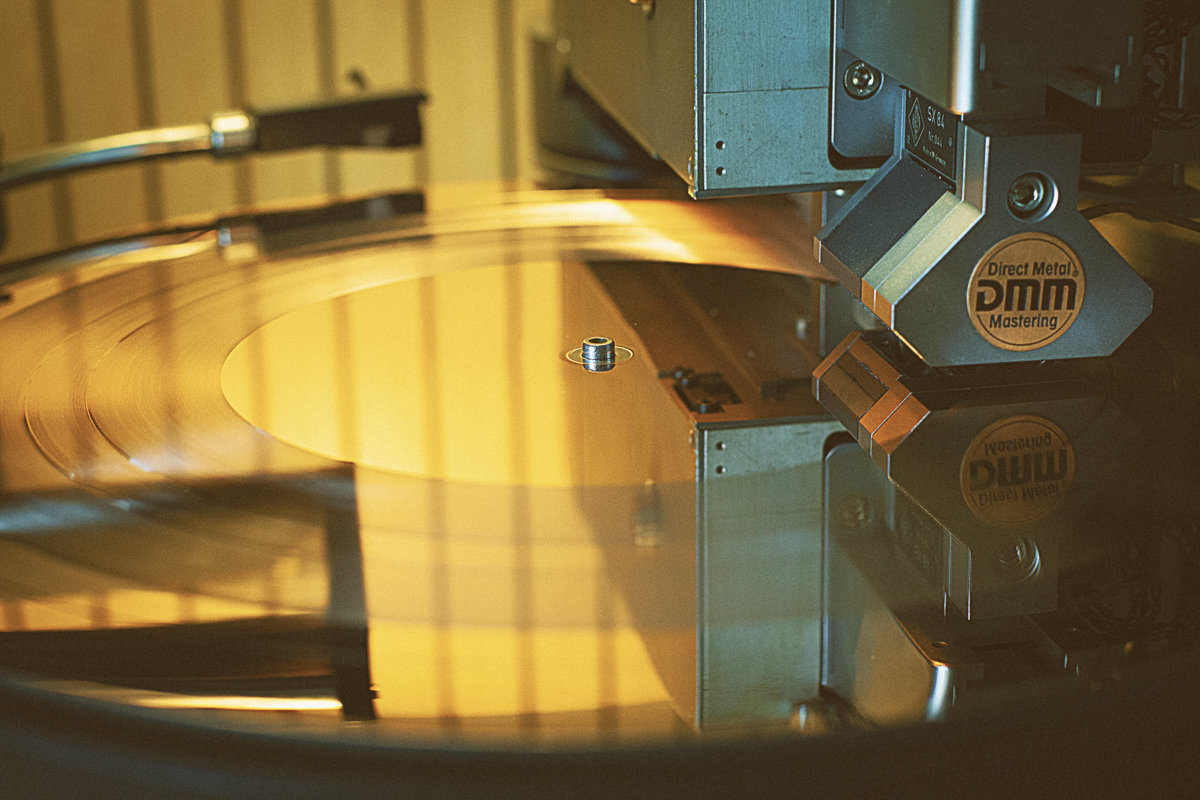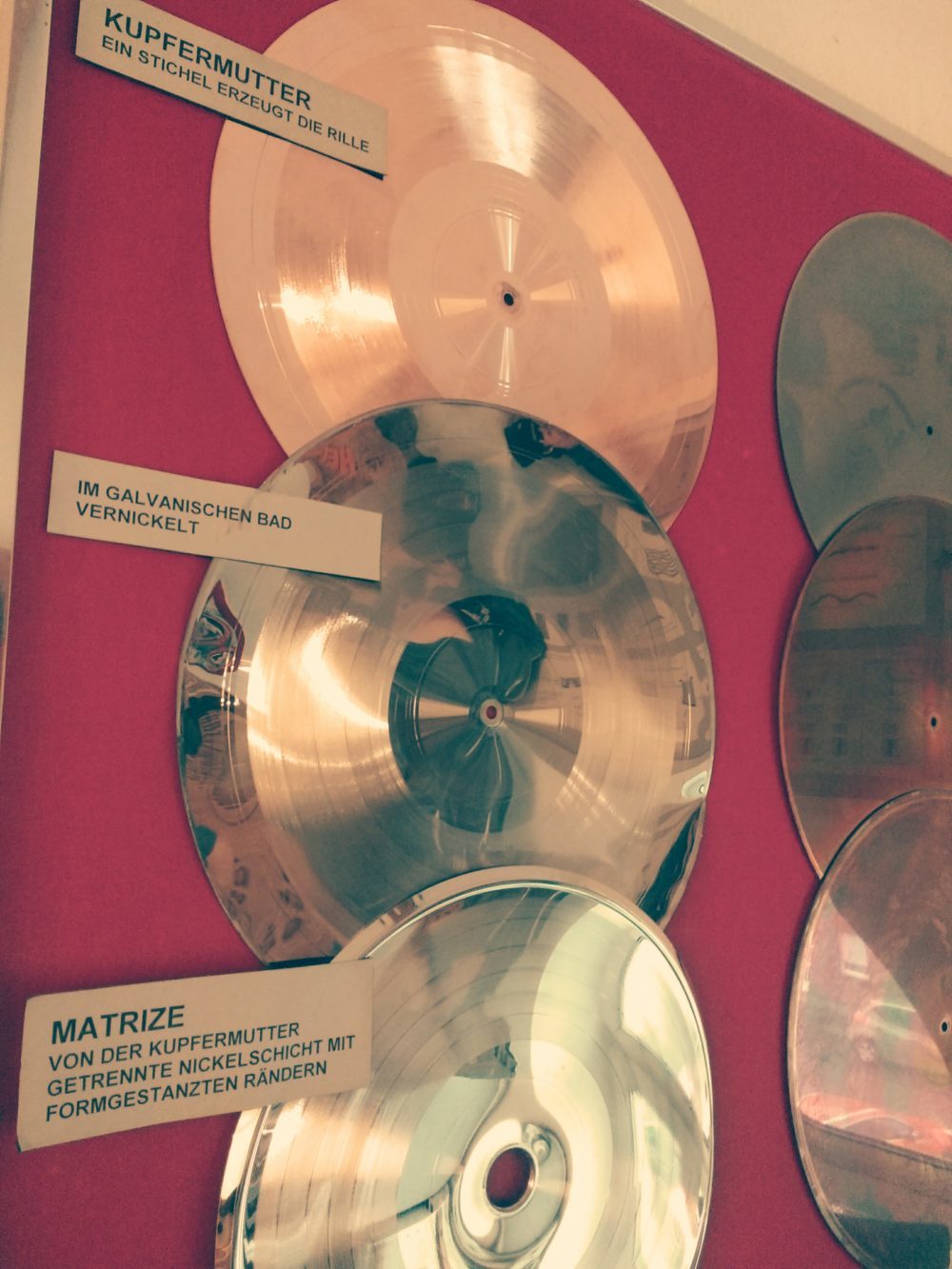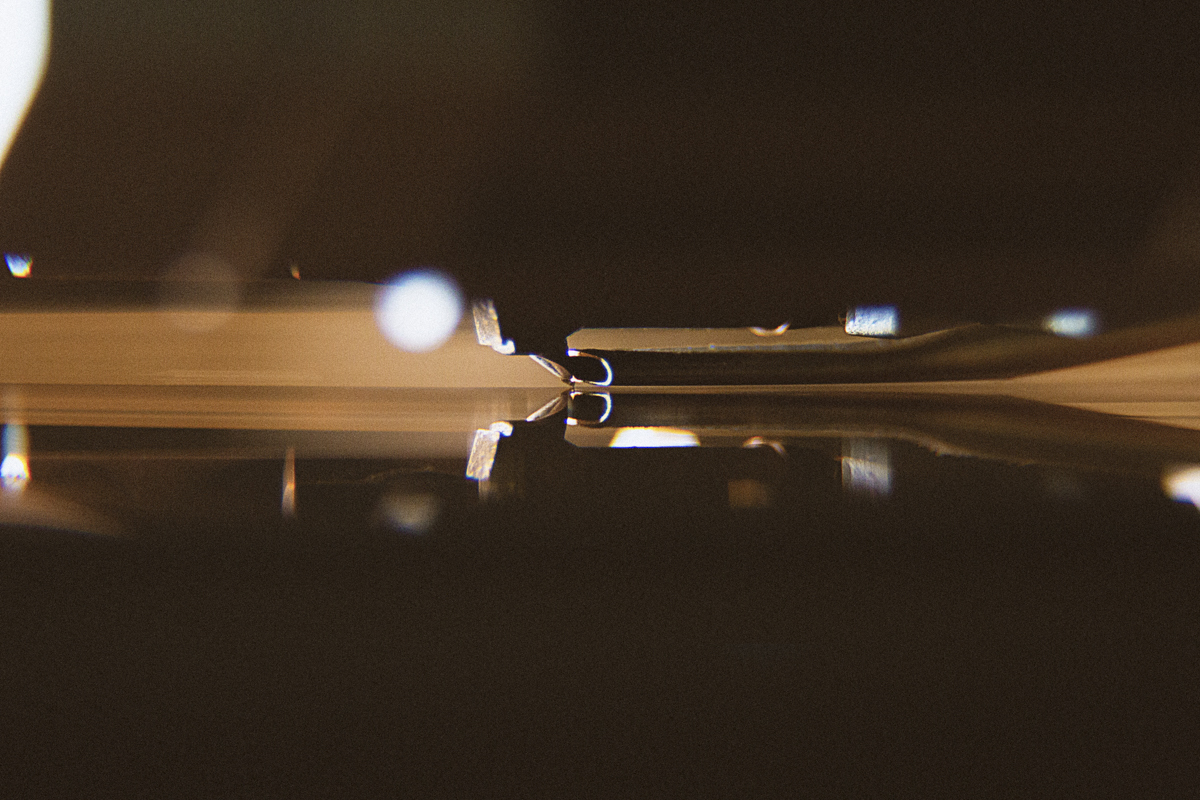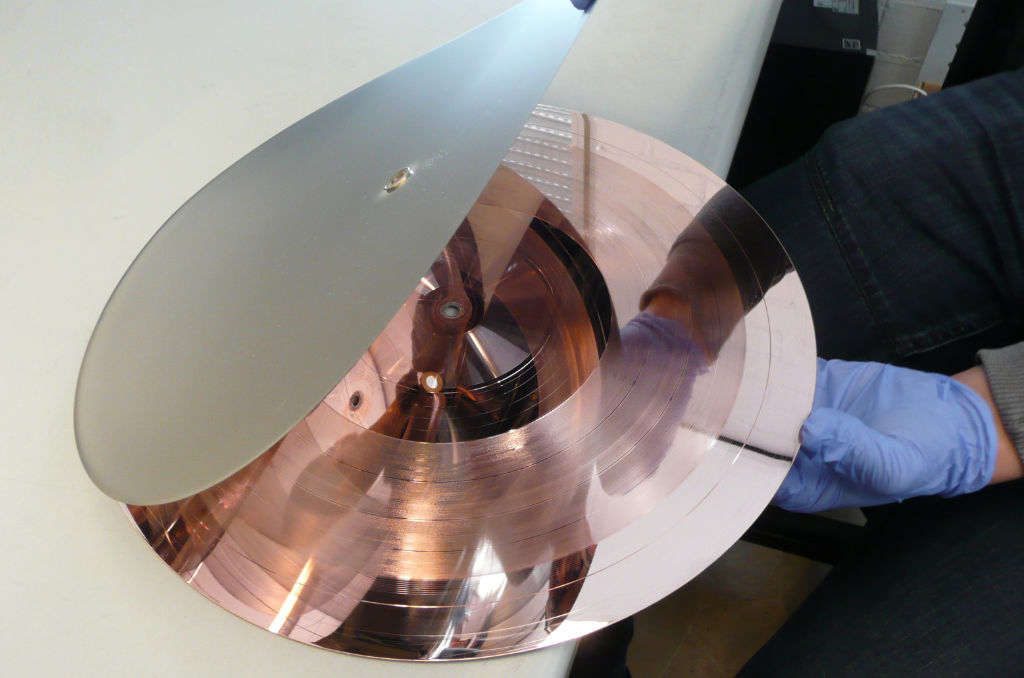
{field.text}
When pressing records, the tone groove is pressed into the soft vinyl according to the good old waffle iron principle. For this purpose, negatives from the A and B sides are clamped into the press as stampers. In order to create these so-called pressing matrices, a positive image of the respective side, a metal master, is required, which must be duplicated in the further course of production. This master is cut into a blank using a special cutting lathe. By setting a cutting stylus in motion, similar to the movement of a loudspeaker membrane, the corresponding audio signal is cut into the surface of the blank. With regard to the surface material of the blank, a distinction is made between lacquer cutting and direct metal mastering (DMM).

Lacquer cutting represents the original version of transfer techniques. A heated cutting stylus cuts the audio signal into a lacquer foil. The surface material of these films has changed again and again over the years until a nitrocellulose-based lacquer mixture has finally established itself, which is still in use today.
After the cutting process, the lacquer foil is silver-plated so that it is conductive. Subsequently, a negative image of copper or nickel is produced in the galvanic bath. The metal master is produced from this by means of a further galvanic coating. This master can now be played back on the turntable for quality control. Theoretically, this would also be possible with the untreated lacquer cutting, but scanning through the needle would damage the soft lacquer. In the further manufacturing process, any number of pressing matrices can be produced galvanically from the metal master.
The DMM cutting process was introduced in 1981 by Teldec (Telefunken-Decca) in cooperation with Georg Neumann as a further development of lacquer cutting. The desired audio material is cut into a copper-coated stainless steel plate using a diamond-studded stylus. Thus, a metal master is produced directly from which the pressing matrices can be produced. In addition to copper, cadmium has also proved to be a suitable surface material, although it is less stable in the subsequent electroplating process.
As early as the 1970s, Teldec had developed a similar process, the so-called Television Electronic Disc (TeD). TeDs were used to record image and video material, which was also realized by copper cutting. Although interest in TeDs was low to non-existent, for Teldec the technology provided the basis for the development of DMM editing.
The biggest challenge was that a significantly higher force had to be applied in the DMM cutting process than was previously customary. While the material of the blanks is significantly softer while cutting with lacquer, a less deep groove is cut for TeDs. To counteract this, the cutting stylus is set in ultrasonic vibrations during DMM cutting, which reduces the cutting resistance.

The unavoidable problems in the lacquer cutting process, which could not be solved in later generations of cutting machines, served as an incentive to think about a new cutting process at all. These problems were generally noticeable in the background noise of the sound carrier as well as impulsive disturbances (crinkling and cracking). Another problem was springback deformations, which on the one hand caused distortions and on the other hand caused pre- and post echoes, especially in the high-frequency range. These can be avoided, but at the expense of playing time and linearity at high frequencies. The reasons for these quality losses are the material properties of the lacquer blanks and the additional steps in electroplating.

A negative image, the pressing matrix or stamper is produced from the metal master in the galvanic process. Galvanic coatings are used for many everyday objects (chrome plating, zinc-coating, silver plating, etc. ). In general, a metallic object to be coated is energized and immersed in a metal-containing electrolyte solution. The polarity of the applied voltage causes the metal particles contained in the solution to attach to the surface of the object. In the special case of pressing matrix production, a nickel layer forms on the metal master, which, if it is removed, forms an exact negative of the audio groove. This process can theoretically be repeated as often as required, which is not insignificant in view of the fact that the pressing matrices have a limited service life during pressing.